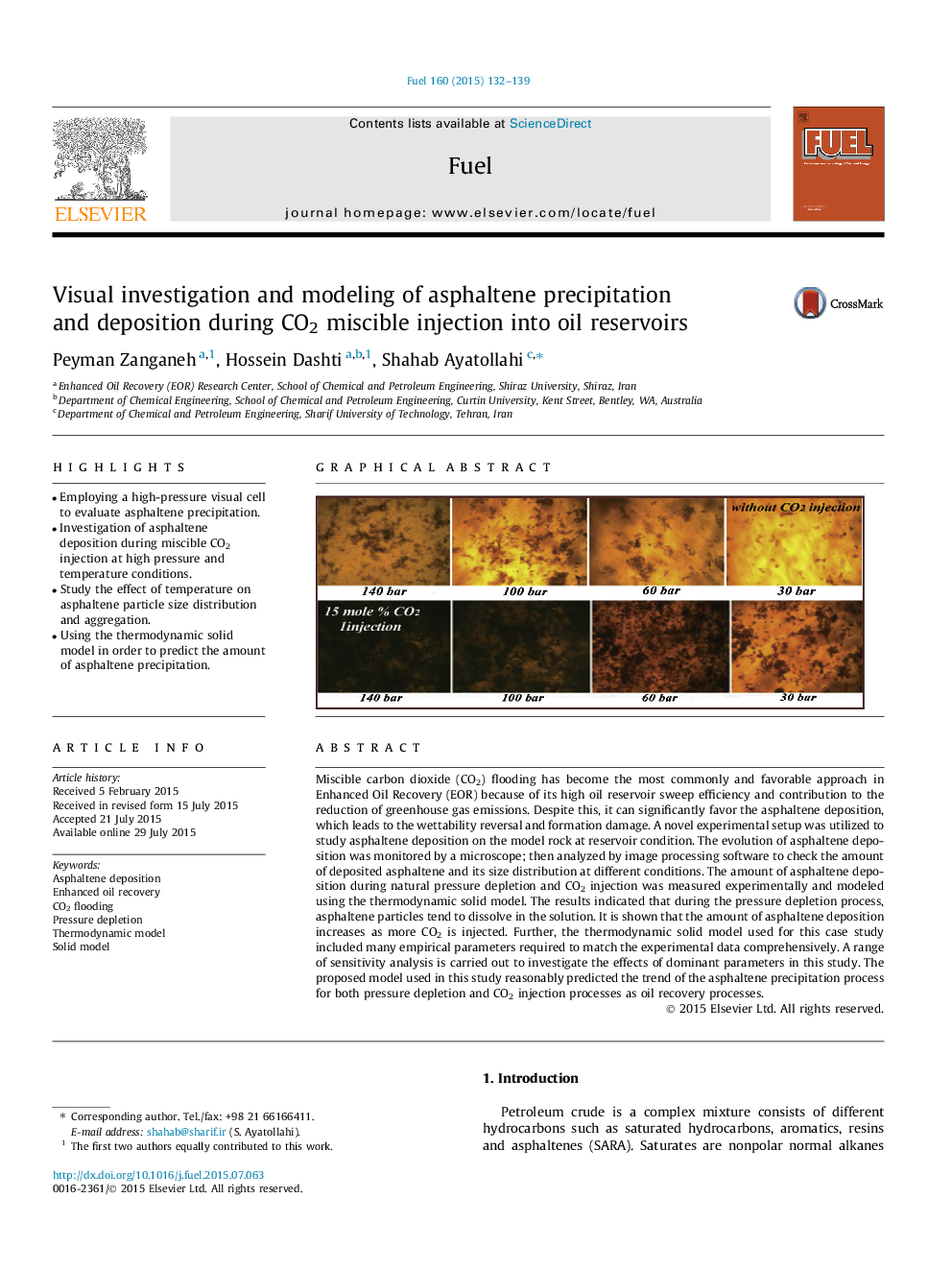| Article ID | Journal | Published Year | Pages | File Type |
|---|---|---|---|---|
| 205535 | Fuel | 2015 | 8 Pages |
•Employing a high-pressure visual cell to evaluate asphaltene precipitation.•Investigation of asphaltene deposition during miscible CO2 injection at high pressure and temperature conditions.•Study the effect of temperature on asphaltene particle size distribution and aggregation.•Using the thermodynamic solid model in order to predict the amount of asphaltene precipitation.
Miscible carbon dioxide (CO2) flooding has become the most commonly and favorable approach in Enhanced Oil Recovery (EOR) because of its high oil reservoir sweep efficiency and contribution to the reduction of greenhouse gas emissions. Despite this, it can significantly favor the asphaltene deposition, which leads to the wettability reversal and formation damage. A novel experimental setup was utilized to study asphaltene deposition on the model rock at reservoir condition. The evolution of asphaltene deposition was monitored by a microscope; then analyzed by image processing software to check the amount of deposited asphaltene and its size distribution at different conditions. The amount of asphaltene deposition during natural pressure depletion and CO2 injection was measured experimentally and modeled using the thermodynamic solid model. The results indicated that during the pressure depletion process, asphaltene particles tend to dissolve in the solution. It is shown that the amount of asphaltene deposition increases as more CO2 is injected. Further, the thermodynamic solid model used for this case study included many empirical parameters required to match the experimental data comprehensively. A range of sensitivity analysis is carried out to investigate the effects of dominant parameters in this study. The proposed model used in this study reasonably predicted the trend of the asphaltene precipitation process for both pressure depletion and CO2 injection processes as oil recovery processes.
Graphical abstractFigure optionsDownload full-size imageDownload as PowerPoint slide
